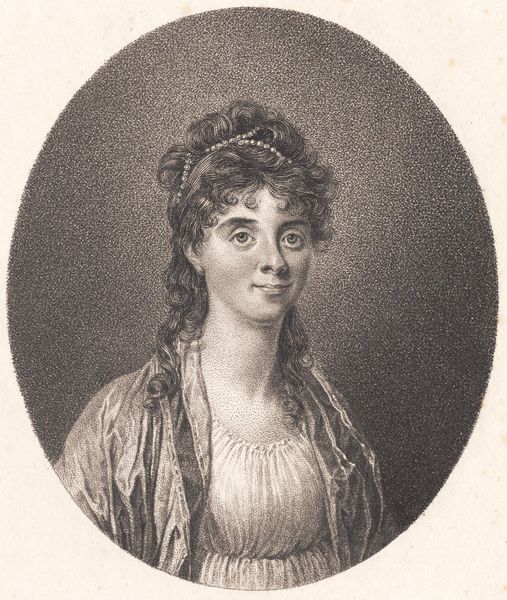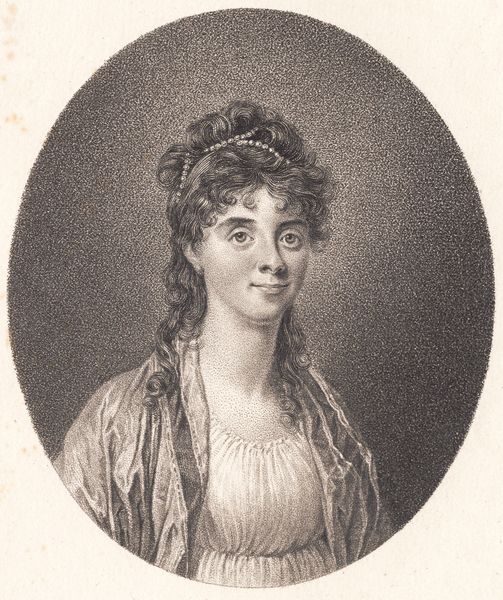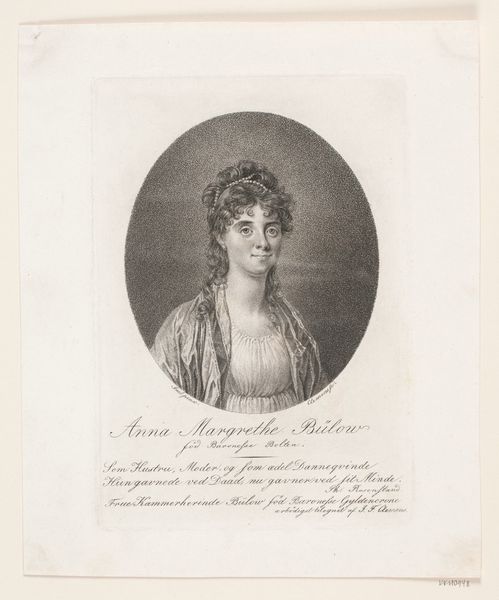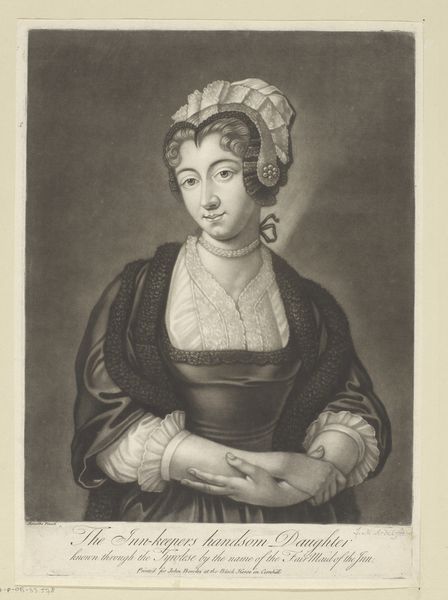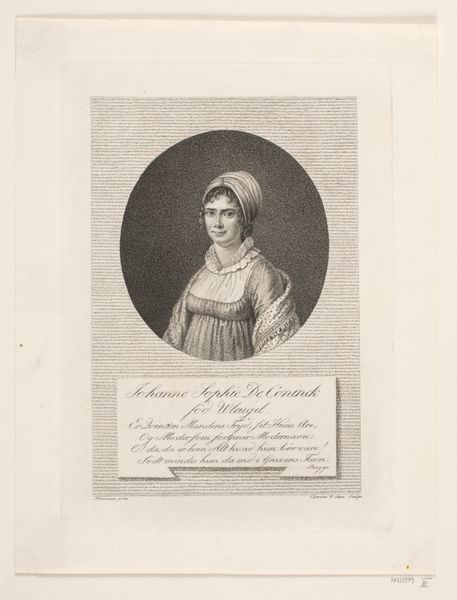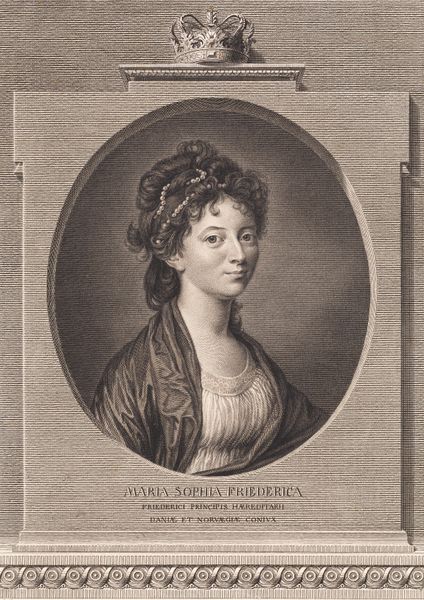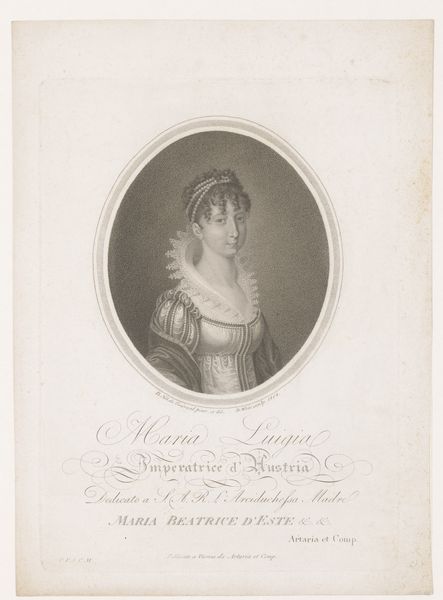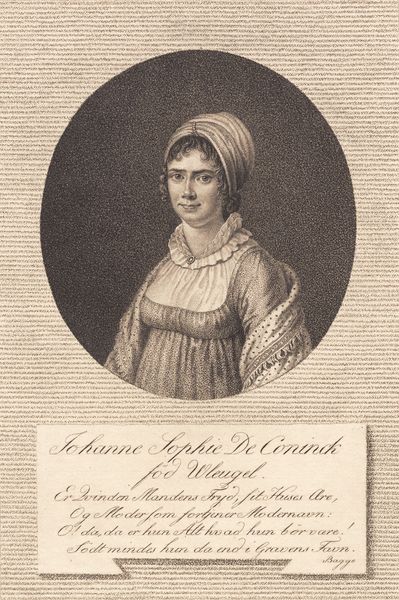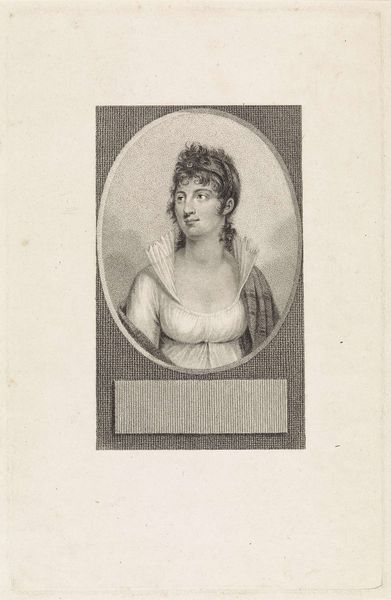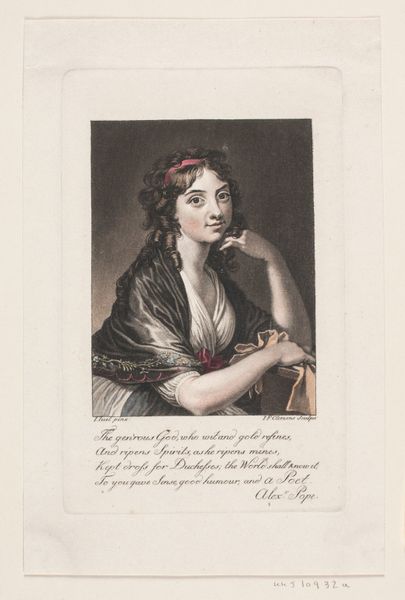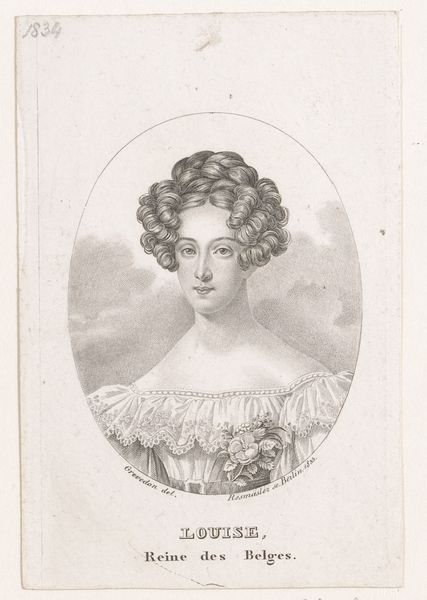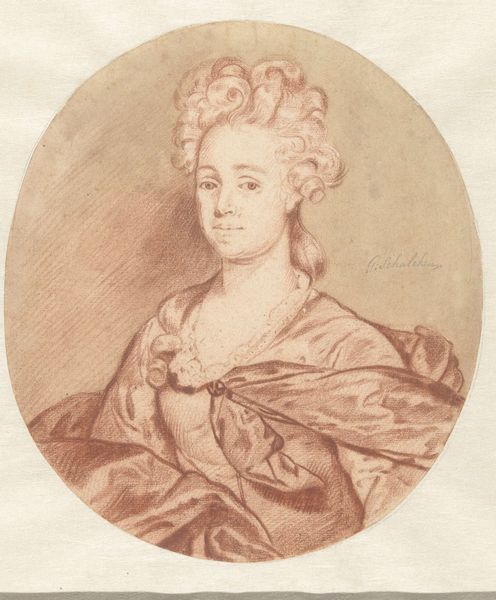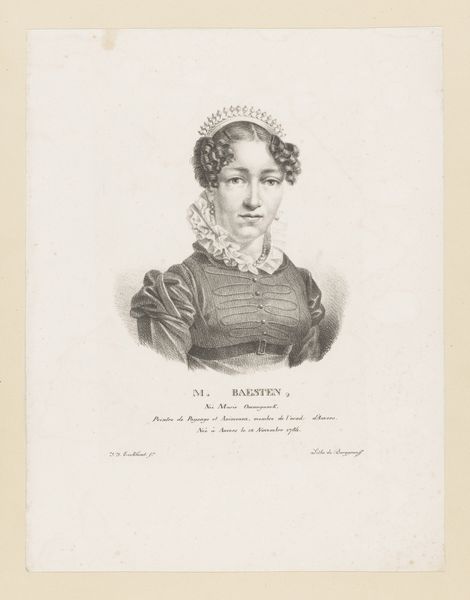
print, engraving
#
portrait
#
neoclacissism
#
16_19th-century
# print
#
old engraving style
#
old-timey
#
19th century
#
golden font
#
academic-art
#
engraving
Dimensions: 225 mm (height) x 165 mm (width) (bladmaal), 197 mm (height) x 138 mm (width) (plademaal), 133 mm (height) x 112 mm (width) (billedmaal)
Curator: This engraving presents us with "Anna Margrethe Bülow," dating from 1748 to 1831. It's currently held at the SMK, the National Gallery of Denmark. Immediately noticeable is the detailed technique; it has a striking old-timey quality, doesn't it? Editor: It does. The stippling and line work are incredibly precise, lending a soft, almost ethereal quality to the subject. I’m drawn to the sheer labor involved in its creation, a slow and deliberate process of etching and printing. Imagine the skill needed to produce such gradations of tone through pure hand work! Curator: Absolutely. J.F. Clemens really showcased his mastery there. The piece reflects Neoclassical sensibilities through its formal, idealized portrayal and its clear, almost austere composition. This print also would have served an important social function, circulating images of prominent figures within elite circles. Editor: That’s right. These images affirmed social status and projected an image of refined aristocracy. We must remember, though, that this visual representation involves careful construction and consumption. How much of the ‘real’ Anna Margrethe did audiences perceive? Curator: A key point. Also, examining Clemens’ broader body of work, his patrons, and the institutions that supported him illuminates the socio-political framework of artistic production. This artwork could thus reflect not only skill but also how social and political power are mirrored and validated. Editor: Precisely. It makes one think about accessibility and modes of display – where would such an image be viewed, who controlled its distribution? Also, consider the economics of printmaking: materials, workshops, labor specialization. Everything factors in to how art manifests. Curator: I appreciate you expanding how materials can tell this story, making us conscious of how societal influence penetrates to art itself, influencing perception, power and artistic value. Editor: And conversely, you remind us how material conditions shaped art’s production, exhibition and, more broadly, reception at distinct junctures in history, deepening our appreciation for both image and object.
Comments
No comments
Be the first to comment and join the conversation on the ultimate creative platform.
